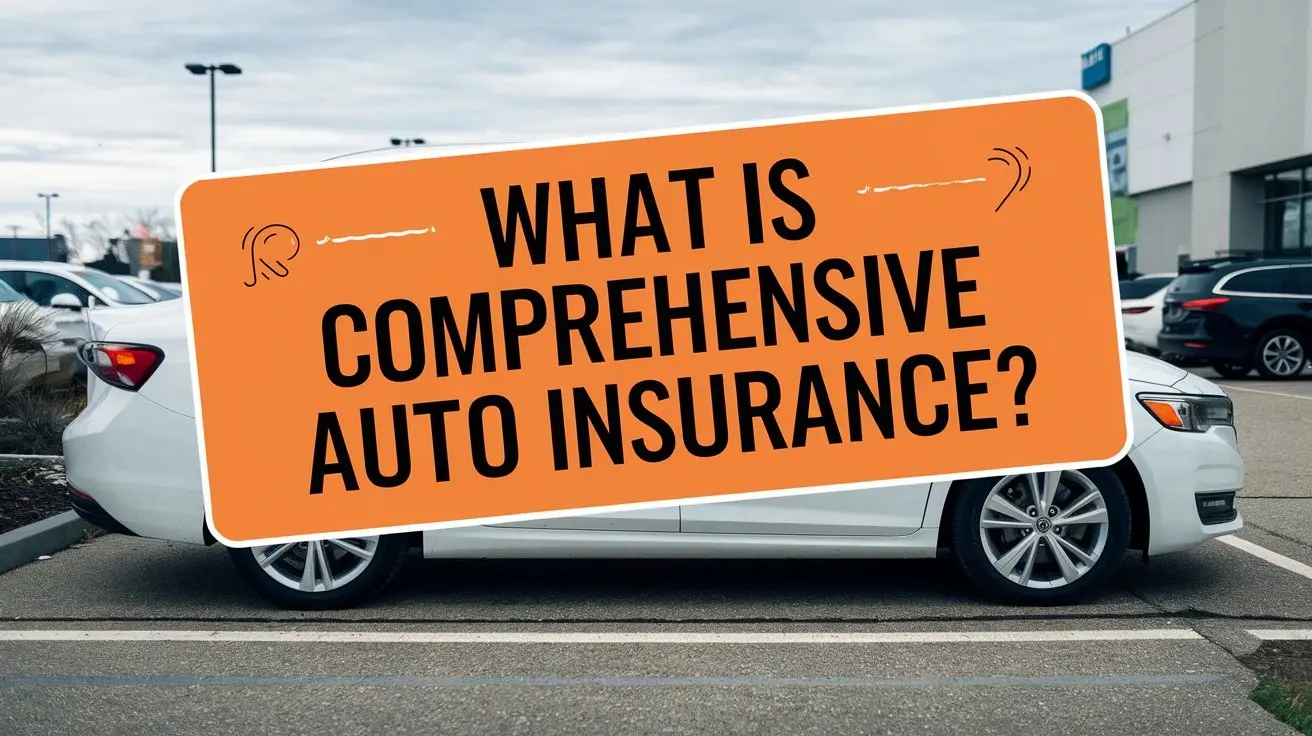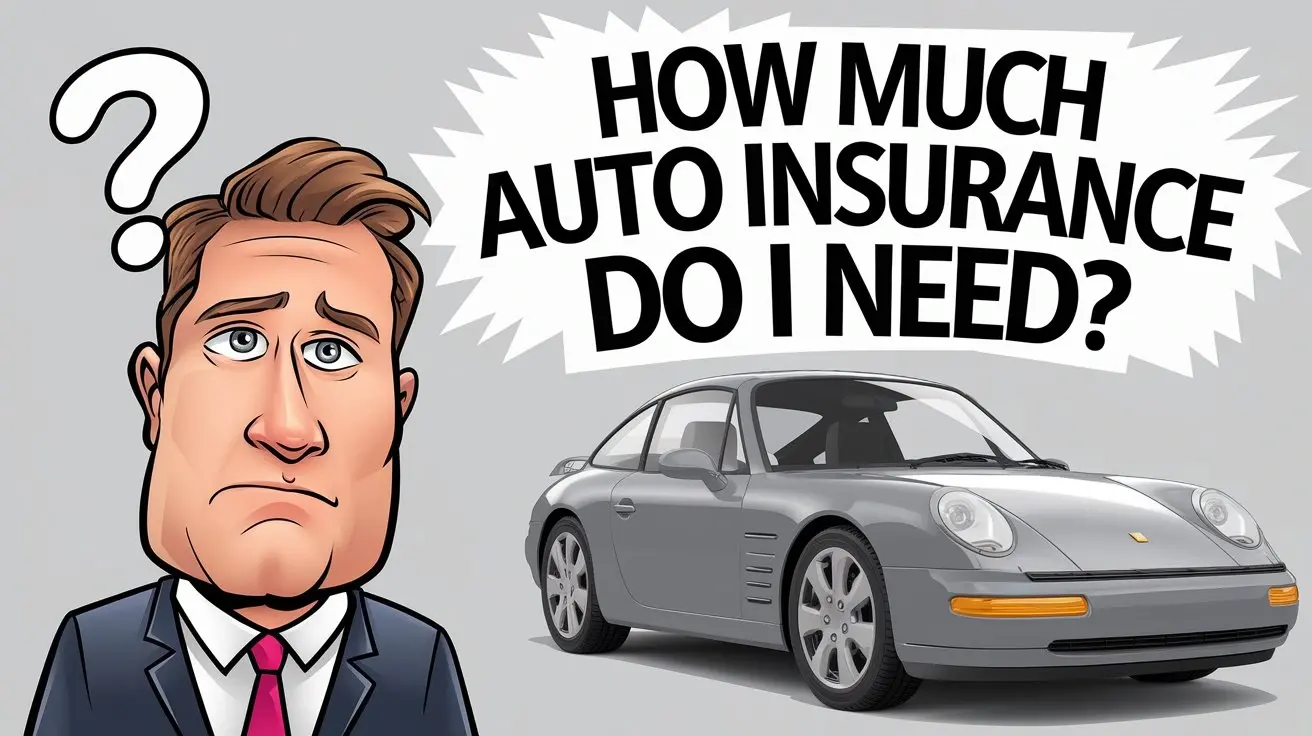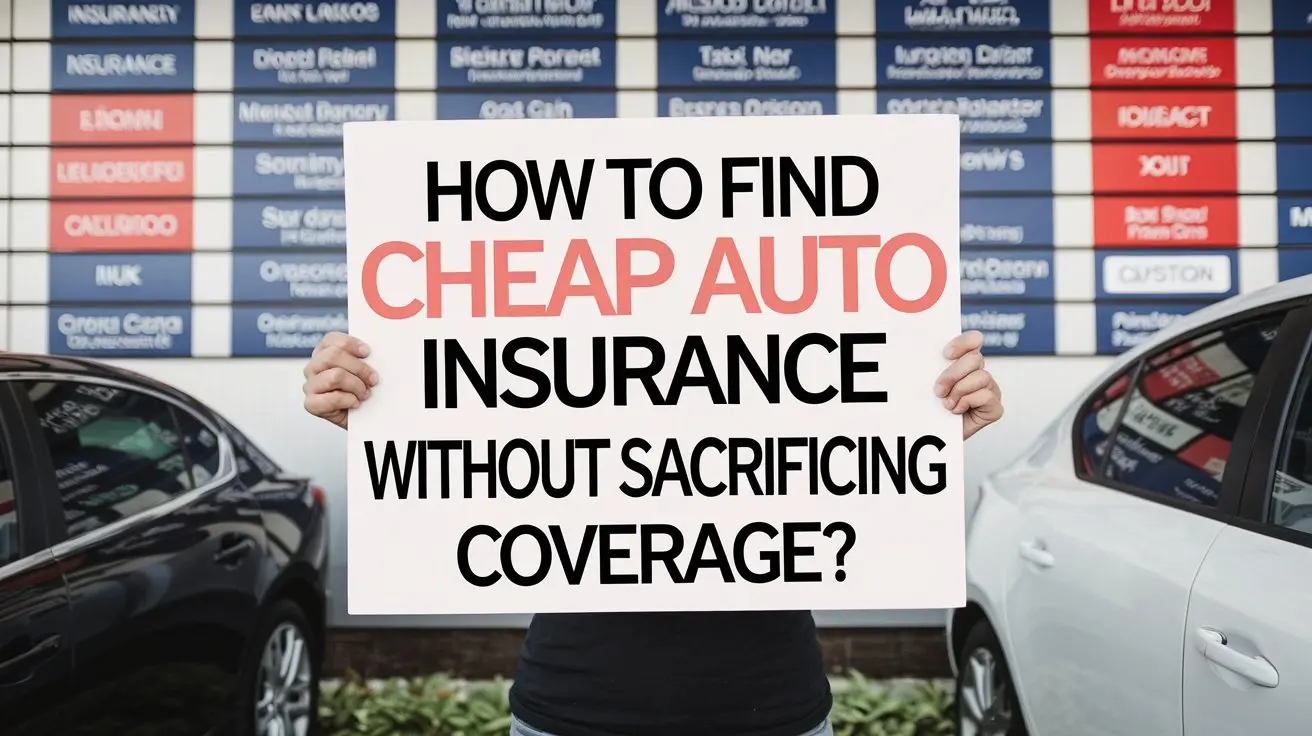12
Apr

When protecting your vehicle, having the right type of auto insurance can make all the difference. While liability and collision coverage are well-known, comprehensive auto insurance often raises questions for drivers. Is it worth the cost? What exactly does it cover?
In this blog post, we’ll break down what comprehensive car insurance is, what it covers (and doesn’t), how it compares to other types of coverage, and when you should consider adding it to your policy.
What is Comprehensive Auto Insurance?
Comprehensive auto insurance is a type of car insurance coverage that helps pay for damage to your vehicle caused by incidents other than collisions. This includes events like theft, vandalism, natural disasters, falling objects, and even animal damage.
It’s sometimes referred to as “other than collision” coverage because it protects you against a wide range of potential risks that aren’t related to a crash with another vehicle.
What Does Comprehensive Insurance Cover?
Comprehensive coverage is designed to protect your car from unexpected, non-collision-related incidents. Here’s a list of what’s typically covered:
1. Theft
If your car is stolen and not recovered, comprehensive insurance can reimburse you for its actual cash value.
2. Vandalism
Intentional damage to your car, like broken windows, keyed paint, or spray paint, is covered under this policy.
3. Natural Disasters
Events such as hurricanes, earthquakes, floods, hailstorms, and tornadoes fall under comprehensive protection.
4. Fire Damage
Whether due to an engine fire or an external source, your insurance will help pay for repairs or replacements.
5. Falling Objects
Damage from falling tree branches, debris, or even objects like satellites or construction material is typically included.
6. Animal Collisions
If you hit a deer or another animal, it’s considered a comprehensive claim—not a collision one.
7. Glass Damage
Cracked or shattered windshields, windows, and sunroofs are often covered, though some insurers offer separate glass coverage with a lower deductible.
What’s Not Covered by Comprehensive Insurance?
While comprehensive insurance is broad, it doesn’t cover everything. Here’s what’s usually excluded:
Damage from Collisions (with another car or object)
Wear and Tear (mechanical breakdown, rust, etc.)
Medical Expenses (yours or another party's)
Personal Belongings Stolen from the Car
Damage from Illegal Acts or Racing
Rental Reimbursement (unless added separately)
To cover these scenarios, you may need collision insurance, liability coverage, medical payments coverage, or gap insurance.
Comprehensive vs. Collision Insurance: What’s the Difference?
Many drivers confuse comprehensive and collision insurance. Here’s how they differ:
Feature Comprehensive Insurance Collision Insurance
| Feature | Comprehensive Insurance | Collision Insurance |
| Covers theft? | Yes | NO |
| Covers natural events? | Yes | NO |
| Does it cover hitting a tree? | No (unless it falls on your car) | Yes (if you hit it while driving) |
| Covers car accidents? | No | Yes (car-to-car or object collisions) |
| Required by lenders? | Often recommended | Usually required if you're financing/leasing |
Both are optional if you own your car outright, but lenders or leaseholders may require both as part of your full coverage.
Do You Need Comprehensive Insurance?
Here are a few questions to help you decide if comprehensive coverage is right for you:
1. Is Your Car Valuable?
If your vehicle has a high market value or is relatively new, comprehensive coverage can help protect your investment.
2. Do You Live in a High-Risk Area?
Urban areas with high theft or vandalism rates or regions prone to natural disasters make this coverage more worthwhile.
3. Do You Park Outside?
Cars parked on the street or in open lots are more vulnerable to environmental damage and theft.
4. Can You Afford Out-of-Pocket Repairs or Replacement?
Without comprehensive insurance, you’d have to cover 100% of repair or replacement costs for non-collision incidents.
How Much Does Comprehensive Insurance Cost?
The cost of comprehensive insurance varies based on several factors:
Vehicle make, model, and year
Location (zip code)
Driving history
Claims history
Deductible amount
On average, comprehensive coverage adds about $150 to $300 per year to your premium. Choosing a higher deductible can reduce your monthly payment, but you’ll pay more out of pocket in the event of a claim.
How to File a Comprehensive Claim?
If your car is damaged by a covered event, here’s how to file a comprehensive claim:
Document the Damage: Take clear photos of the affected areas.
File a Police Report: Especially in cases of theft or vandalism.
Contact Your Insurance Company: Report the incident and provide evidence.
Get a Repair Estimate: Your insurer may require you to visit an approved repair shop.
Pay Your Deductible: The insurer covers the rest after your deductible is met.
Final Thoughts
Comprehensive auto insurance offers peace of mind by protecting your vehicle from unexpected, non-collision damages. While it’s optional in most states, it can be a smart addition to your auto policy—especially if your car is valuable, you're in a high-risk area, or you want full protection beyond accidents.
When bundled with collision coverage, comprehensive insurance ensures you’re covered from nearly all angles. As always, compare quotes, review your needs, and consult with your insurance provider to build a policy that works best for you.
Call (888) 666-1005 to get auto insurance now!



